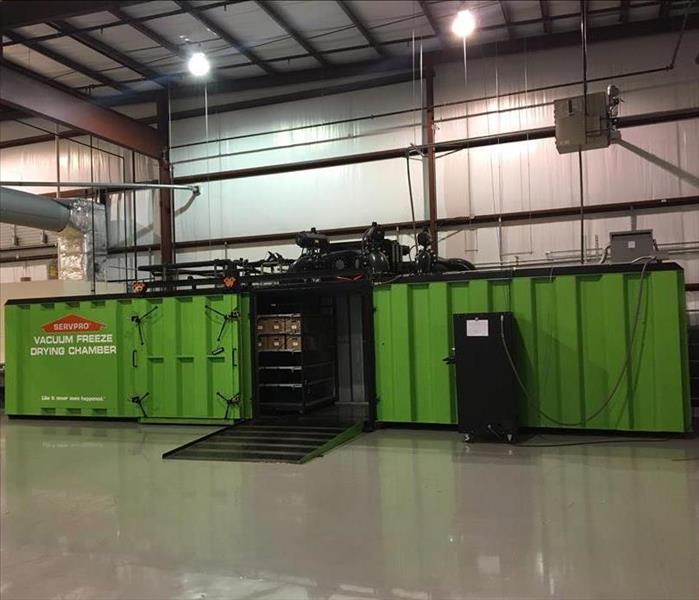What to do when your important documents got water-damaged
8/28/2017 (Permalink)
Is it possible to dry water-damage documents? Yes, it is! What is SERVPRO method? Vacuum Freeze drying!
“The document Restoration Team uses the same technique that the library of Congress uses to dry-water damaged books”.
What is Vacuum Freeze drying? It is the most efficient and effective way to salvage your water-damage documents. The vacuum freeze-drying process can be used to recover and restore paper files, books, and photographs, as well as blue prints, microfiche, x-rays, business archives, etc. Typically, these items are one-of-a-kind or irreplaceable (historical, collectable, legal, medical).
The Document Restoration Team uses a process called “sublimation” to avoid causing more damage to your documents after a flood, for example. Sublimation converts solid into gas. So, here is what happens. As soon as we get your wet or moist documents, we freeze them in a cold storage space. Damaged documents should be frozen as quickly as possible to stabilize them, and prevent further damage. The water in your documents becomes ice, a solid element. Next, using Vacuum Freeze Drying Chamber, located in Jackson, we extract the ice by sublimation. That is to say that the ice in your papers becomes gas or water vapor in order to be vacuumed.
This extraordinary technology used by SERVPRO is the only method approved by the National Archives and Records Administration (NARA) and the General Services Administration (GSA).
Why is Vacuum Freeze drying the best method? Well, other methods like dehumidification can alter the structure of the paper’s fibers causing them to become more brittle.
Once your items arrive at a SERVPRO facility, 24/7 video surveillance is guaranteed. Standard drying time is 7-10 days, but it could vary based on moisture content and backlog.
The Document Restoration Team offers cleaning, trimming from fire damage, refile jacketing, deodorization, gamma irradiation, and basic drying.






 24/7 Emergency Service
24/7 Emergency Service
